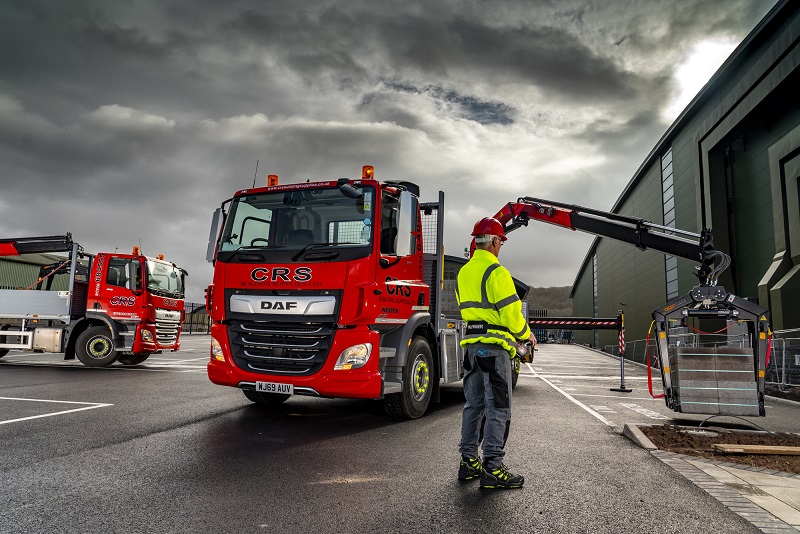The three-axle delivery vehicles feature a steer, drive and lifting rear-steer tag-axle configuration, delivering what the operator’s transport manager, Paul Gibbard, describes as “outstanding manoeuvrability and payload”.
Spec’d to have the same overall chassis length as the 18-tonne DAF vehicles but with a greater payload, the vehicles can carry and deliver 9 packs of blocks with no problem at all, comfortably running with 13t on board.
These new trucks are equipped with bespoke drop side bodies and high quality Palfinger BM26 loader cranes, both fitted by the expert team at Palfinger UK. CRS also had censored crane slipper pads fitted to the rear of each vehicle to provide maximum safety for drivers and flexibility on the varying delivery conditions they meet.
“Safety is very important to us: for our drivers, customers and other road users,” says Gibbard. “It starts with ensuring complete compliance, and our local dealer, Kingdon Wessex DAF, looks after us very well on service, maintenance and inspections. Then, apart from the additional crane stability pads, we add such things as recording camera units all-round, repeat-indicator side markers, Fresnel lenses on near-sides, lifting rear mud flaps to aid reversing safety in tight sites, cage sensors …. the list goes on and on. And we brief our drivers fully on every aspect.”
He added, “The thing is, these vehicles are like a big Swiss Army knife, they just have everything you need.”
CRS, which only started in business in 2005, now operates a fleet of 40 trucks out of 12 branches across the South West. One of the two founding directors, Chris Waelchli, discusses fleet acquisition strategy for a small business. He states: “Let’s be honest: to start with, you run anything, so long as it’s safe. Then, when you can afford it, you try and do better. So the growth of the fleet and the quality and newness of its vehicles is simply a reflection of how well the business has done.”
“The other bonus with a modern fleet, of course, is that we are automatically more environmentally supportive and able to fit in with such things as Bath and Bristol’s drive toward their clean air zones.”


